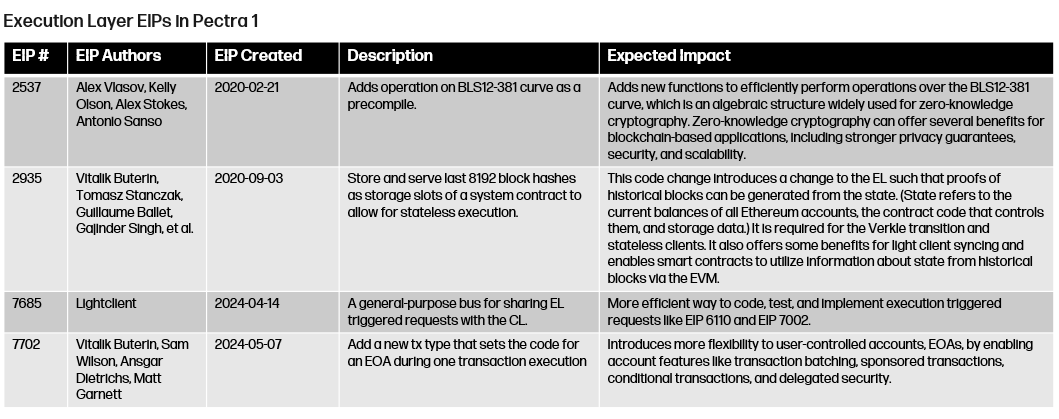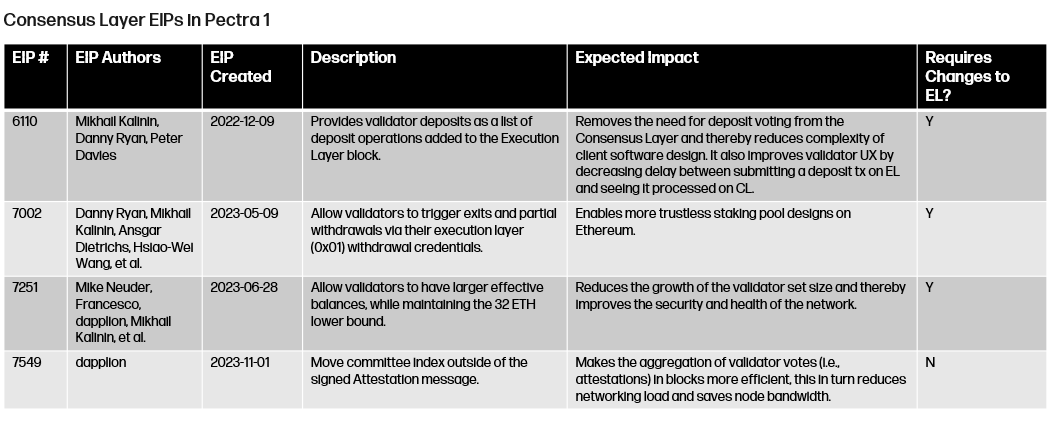2024-09-16

Ethereum developers are considering
splitting the upcoming Pectra upgrade into two separate phases due to its
complexity.
The Pectra upgrade, which combines the Prague and Electra upgrades, aims to enhance both the execution and consensus layers of the Ethereum network.
Prague upgrade consists of Execution Layer upgrade. It called Prague
because it named after a Devcon city. While, Electra is Consensus Layer
upgrade, it named after a star.


The first phase, tentatively called Pectra 1, is expected to be released as soon as possible, potentially by early 2025. Ethereum developers set goal to release it between February and June 2025.

The second phase is called Pectra 2.
This phase will include several
Ethereum Improvement Proposals (EIPs) such as EIP-3074, which allows standard
wallets to function like smart contracts, and EIP-7251, which increases the
staking limit for validators.
What is Pectra upgrade?
The Ethereum Pectra upgrade is
an upcoming major network update scheduled for early 2025, combining two
previously planned upgrades: Prague and Electra.
It aims to improve both the execution
layer (where smart contracts operate) and the consensus layer (managing the
proof-of-stake system).
Key features include:
1. Validator
Enhancements (EIP-7251): This proposal increases the maximum effective
staking limit for validators from 32 ETH to 2,048 ETH. This allows validators
to consolidate their stake into fewer validators, improving network efficiency
and reducing operational costs, especially for large staking providers
2. Smart Contract
Wallet Integration (EIP-3074 and EIP-7702): This upgrade enhances regular
cryptocurrency wallets by enabling them to function like smart contract wallets
during transactions. This will allow features such as transaction bundling,
delegated security, and social recovery, significantly improving wallet
security and user experience.
3. Improved Gas
Efficiency: EIP-4758 aims to lower gas costs by optimizing operations within
the Ethereum Virtual Machine (EVM). This will benefit users by reducing
transaction fees, particularly for complex smart contracts.
4. Peer Data
Availability Sampling (PeerDAS): Another feature being considered is
PeerDAS, which enhances Ethereum’s scaling capabilities, particularly for
layer-2 rollups. This will increase the network's capacity to process more
transactions efficiently.
The Pectra upgrade aims at increasing
efficiency and scalability of the Ethereun network.